
The controversial 'I no longer participate' hashtag
Due to the coronavirus, the Dutch government had to impose a lockdown and social distance measures. In the early days, the Dutch people seemed to respect and comply with the measures. However, soon a different sentiment occurred: criticism and anger. On September 22, a group of Dutch actors, musicians, and influencers started a hashtag called ‘Ik doe niet meer mee’ on Instagram. In video posts, the celebrities said they had had enough. They stated that the government should be more honest and transparent about what they are doing and what is going on. Until then: I no longer participate!
The English translation of the hashtag is ‘I no longer participate.’ In this article, I will use this translated phrase when discussing this action. Figure 1 shows one of the hashtag posts. The example in question is a post by singer and rapper Famke Louise. It had the following caption:
This can’t go on. I say ‘NO’ to all measures until the government can controllably justify this policy. Do you agree with me? Share this video and make one for your social circle. Only together we can get the government under control. #INOLONGERPARTICIPATE. Power to the people!
Figure 1. Famke Louise’s #ikdoenietmeermee post from September 22, 2020
The question I would like to answer in this paper is: What do the ways in which news outlets report about the ‘I no longer participate’ hashtag tell us about digitalization influences in the news media field? Digitalization influences here means both the impact of digitalization as such, as well as the influence of social media on multiple aspects of the news producton process. More details and explanation about this will be discussed in the next section. For the analysis, I selected two articles about the hashtag by Dutch newspapers Het Parool and Trouw to see if there might be differences in reporting.
To come to my analysis, I first have to discuss some concepts that will prove useful.
Sources becoming news producers and journalists sourcing social media
For a long time, the journalist functioned as an intermediary between news sources and news consumers. Journalists thus were gatekeepers of information. Digitalization changed this. In the present day a source has the means to speak to the people directly. Elite sources, such as influencers, can go to any social media platform and directly say what they want to say to their audience. These elite sources can now produce news themselves. They can bring their story to the people themselves, and do not need to go through the news media. This phenomenon is referred to as news sources becoming news producers (Carlson, 2016).
Digitalization therefore impacts how news media select news. Journalists keep an eye on what the trending topics are on social media. When something goes viral, it has the public’s attention. Platforms such as Facebook use algorithms to provide their users with the content they want. Which is content the users will deem important based on the profile the platform puts them in. Popularity is preferred over moral importance. Poell & Van Dijck (2018) refer to this as the social media logic. Writing about popular topics, such as a hashtag that went viral, will secure journalists' clicks and revenue.
Strategic emotionality and framing
In the past, journalists needed to report on issues and situations rationally and objectively (Wahl-Jorgensen, 2013). But due to digitalization and social media logic, news media have started to use more subjective language and emotion in news presentation. Social media platforms’ algorithms prefer stories about, or which create, emotions of anxiety, anger, or awe, and those will thus travel farther and reach a larger audience (Welbers & Opgenhaffen, 2018). To adapt to this, journalists strategically use emotionality in their coverings, alongside sources that express their emotions.
A concept that will prove useful is framing. Analyzing frames sheds light on how exactly influence over human thought is created when transmitting information from, for example, a speech, expression, or article, to the receiver’s consciousness (Entman, 1993). Journalists use frames to make news coherent and make sense for their readers. They frame a situation or issue by selecting only certain aspects of a perceived reality and excluding others (Entman, 1993). They also make news salient, which means that the information is made extra meaningful so that the receiver will detect it, understand it, and remember it.
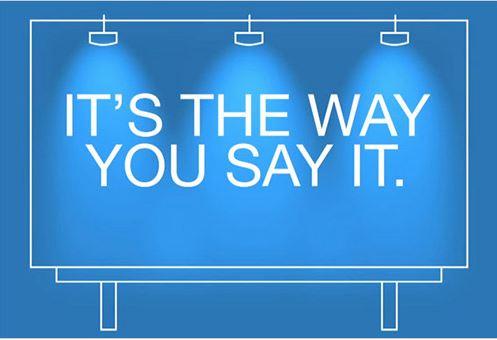
Figure 2. Framing
There are multiple sorts of frames. One kind is generic frames, which look at the bigger picture, such as issues in society (De Vreese, 2004). Semetko & Valkenburg (as cited in De Vreese, 2004) defined five types of generic frame. For this article, two of those frames will prove useful: conflict and attribution of responsibility. The conflict frame focuses on a conflict between persons, groups, institutions, or countries. If an issue or problem is presented as caused or solved by someone, a group, or government, we speak of attribution of responsibility.
The 'I no longer participate' action
The action and hashtag itself are an example of news sources becoming news producers. The Dutch celebrities who took part in the ‘I no longer participate’ hashtag posted their protest message on their Instagram directly for their followers to see. They did not have to go to a newspaper or television broadcaster to provide the public with information about their act of resistance. They all recorded a video, wrote a caption, added ‘I no longer participate’ as a hashtag, and then simply pressed ‘post.’ The news media then took the hashtag and the participants’ online testimonies both as a topic and as a source to run an article on.
To see if there might be differences in reporting on the action, specifically concerning the concepts mentioned above, I now turn to two articles from Dutch news companies about the hashtag.
Het Parool about 'I no longer participate'
The first selected newspaper is Het Parool. Figure 3 shows the title of their article about the hashtag. Its translation is: ‘#inolongerparticipate: message influencers wakeup-call for policy makers.’ In general, the article attempts to determine what the reasons were the involved influencers and their associates had the feeling that they needed to start this hashtag campaign. Some of the reactions the action provoked are discussed as well.
To make sense of the hashtag, the journalist from Het Parool uses several news frames. The first one of these frames is that the action is a conflict. He detects that the hashtag is a conflict between the celebrities who started it and the government officials responsible for the corona policy. The artists demand more clarity, and answers to critical questions they have about the government's policy.
To determine which individual, group, or institution was responsible for the action, Het Parool uses an attribution of responsibility frame. The journalist states that the government is responsible for the emergence of the hashtag. First, he provides the point of view of the hashtag starters. They say they started this action because the government mismanaged the crisis and is not transparent about the decisions to take certain measures. The responsibility frame is extended by an analysis. According to the journalist, when the purpose, need, and logic of the measures are very vague, the already fragile support for the corona policy will only crumble more (Het Parool, 2020). This is in line with the article’s title and the main message that the hashtag is not foolish. Instead, the government should see it as an eyeopener to change their way of informing the public.
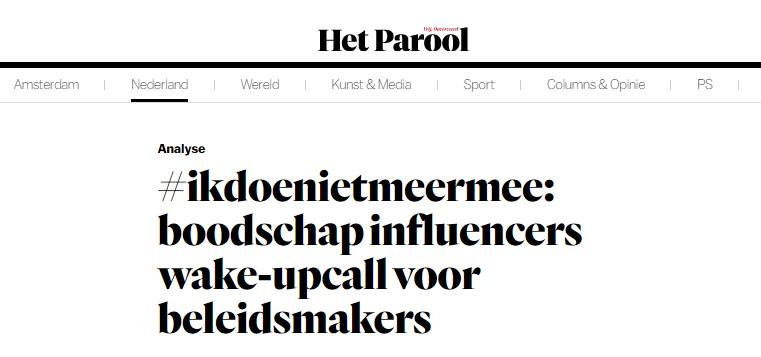
Figure 3. Title of Het Parool article: #inolongerparticipate: message influencers wake-up call for policymakers
Emotionality
In general, the article is written objectively and rationally. Emotionality is raised when the journalist discusses the hashtag-starters’ message and direct quotes. This involved celebrities using words such as; ‘we will not keep our mouth shut,’ and ‘the public is massively made afraid’ (Het Parool, 2020).
The other form of emotional content is when the journalist reports on the reactions from other celebrities. One of the sub-headlines is called ‘selfish and lazy,’ which is pretty emotional language. However, the two words are taken out of context to make the sub-headline more appealing or even sensational. When you read the paragraph, it becomes clear that comedian Claudia de Breij indeed called the hashtag participants selfish and lazy in a Tweet, but only for their conclusion that they will no longer participate. She, however, does agree with some of the critical questions they want the government to answer. Thus, the journalist used ‘selfish’ and ‘lazy’ to summarize that paragraph’s focus, the criticism the ‘INLP’ celebrities received for some of their actions.
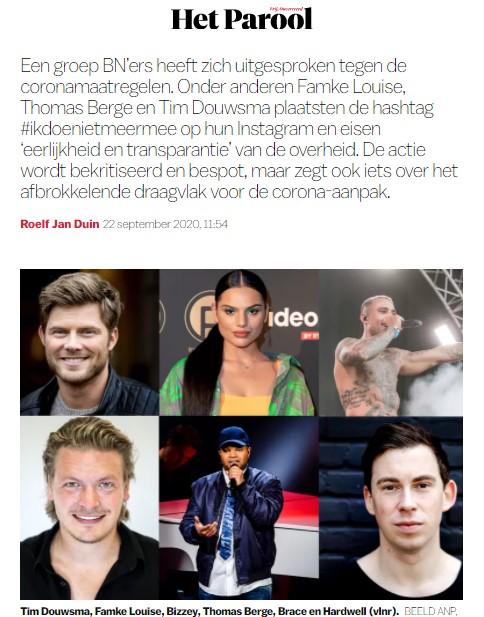
Figure 4. Headline of Het Parool article about #ikdoenietmeermee
Headline of Het Parool article: A group of Dutch celebrities has spoken up against the corona measures. Among others, Famke Louise, Thomas Berge, and Tim Douwsma posted the hashtag #inolongerparticipate on their Instagram page and demand’ honesty and transparency’ from the government. The action is being criticized and ridiculed, but it also says something about the decreasing support for the corona-approach.
The hashtag discussed by Trouw
Trouw is the second newspaper from which I selected an article. It opens by providing information about the hashtag action by this group of Dutch celebrities. The hashtag’s message is that the participants are angry with the government and will no longer follow their corona measures. However, the main focus of this piece of news is the negative reactions the hashtag starters received from fellow celebrities.
To provide clarity about the hashtag, the journalist from Trouw uses multiple frames as well. He defines the happening as a conflict between the celebrities who took part in the hashtag and other stars who did not. The journalist then introduces an attribution of responsibility frame. He determines the celebrities did not set up the action themselves; Virustruth did. Virustruth is a movement that does not agree with the Dutch government’s corona policy. They file lawsuits against the state and organize protest events. This movement orchestrated the ‘I no longer participate’ action and instructed the involved celebrities. Trouw thus frames Virustruth as the institution or group responsible for the hashtag. The movement’s frontman says they did it to get a hold of these celebrities’ young followers. According to him, the government criticizes the Dutch youth for their behavior. And so they set up this hashtag to tell the youth that they are heard and supported.
Trouw concludes that there is another individual who seems to be responsible as well. Prime-minister Rutte reacted with the words ‘they need to shut up’ to soccer fans who sang and cheered during a match, violating the corona guidelines. His words are said to have set the hashtag action in motion (Trouw, 2020).
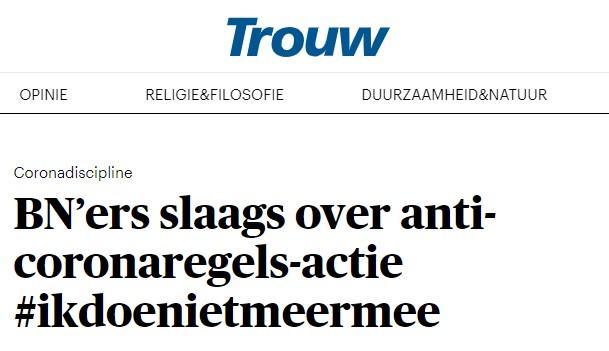
Figure 5. Title of an article by Trouw: Dutch celebrities clash over anti-corona rules action #inolongerparticipate
Trouw's use of emotion in their article
When we investigate the use of emotion in this article, the first thing that stands out is the sensational title, illustrated in Figure 5: Dutch celebrities clash over anti-corona rules-action #inolongerparticipate (Trouw, 2020). It makes it sound like the parties involved got into a fight. Reading the article it becomes clear that this is not the case; there is only a disagreement. This way of framing the situation works well to lure the viewer into reading the article, however. In this sense, it can be viewed as clickbait.
Emotion is present in the article when one of the hashtag participants talks about the reasons behind the action. Rapper Bizzey says that they are not mad and that they have seen the situation getting worse. He wants answers to questions about the utility of non-medical facemasks and 1.5 meters distance and why doctors who speak critically of such measures are silenced.
Some of their opponents provide emotional content as well. With angry reactions, they criticize the hashtag starters. Singer Tim Knol recorded and posted a protest song. Another response is biologist Freek Vonk’s reply to actor Tim Douwsma’s ‘I no longer participate’ post; 'use your influence in a better way man. I admire you. This will lead to nothing’ (Trouw, 2020). This quote is used in the article’s headline as well, as is shown in Figure 6.
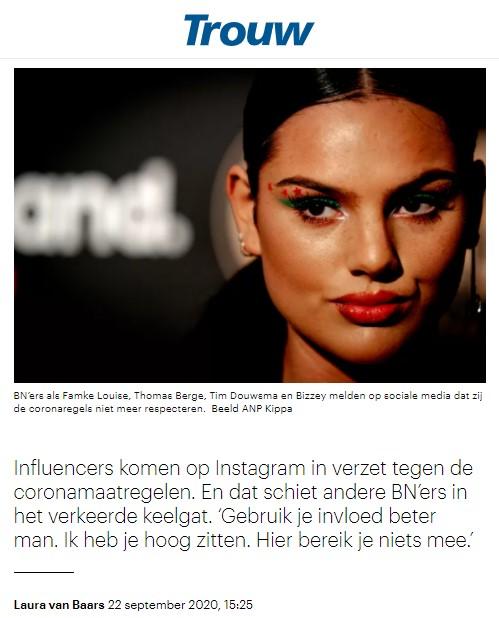
Figure 6. Headline of Trouw’s article about #inolongerparticipate
Headline of Trouw’s article: Influencers oppose the corona measures on Instagram. And that bothers other Dutch celebrities. ‘Use your influence in a better way man. I admire you. This will lead to nothing.’
Comparison and digitalization influences
Comparison of the articles makes it clear that the newspapers reported on the happening quite differently. They have in common that they both look at the hashtag’s consequences and try to determine who is responsible for it. Both consider the hashtag a conflict. The difference between the news outlets is that they frame the conflict as between different parties.
In Het Parool, the journalist defines ‘I no longer participate’ as a conflict between a group of celebrities who are angry about the government’s corona management and said government. In the words of the hashtag starters, the government officials responsible for the pandemic policy and its unclearness are the institution responsible for the hashtag action. Besides providing the ‘I no longer participate’ participants’ point of view, Het Parool also contributes its own analysis that the hashtag and the rebellion it portrays are caused by the government not being transparent about their decisions regarding their corona policies. It is said that vagueness and the seeming lack of usefulness of certain measures can lead to an ever bigger decrease in the public’s support for the government’s pandemic policies. The hashtag action is but an example of this decreasing support. But here also lies a suggestion of a solution: if the responsible politicians make their decisions more transparent and explain them better, it is possible to turn the tide.
The piece by Trouw suggests a different kind of conflict. Here the conflict is presented as being between the hashtag celebrities and other celebrities who critique the hashtag. The journalist from Trouw, just like Het Parool, investigates who or what is responsible for the action. He, however, comes to a different conclusion. According to him, the group that is responsible is the anti-corona measures movement Virustruth. This movement created a WhatsApp group of celebrities over the summer to use that group for actions. The ‘I no longer participate’ hashtag is one of these actions. Besides Virustruth, prime-minister Mark Rutte is also defined as partly responsible for the hashtag, because Rutte spoke harshly about soccer fans who, in his eyes, misbehaved during a soccer match. His words were seen as quite provocative and are suggested to have been the last push to start actions, such as the I don’t participate hashtag.
Het Parool and Trouw directly sourced from Instagram and Twitter for their article about the hashtag. The influencers, musicians, and actors first posted their protest videos on Instagram. Critics then reacted to those posts directly, or tweeted about it on their own accounts. Both parties directly gave their opinion on those social media platforms. The newspapers then reported and reflected on these happenings on social media. In this sense the journalists amplified these people's voices by using their quotes and statements in their reporting. This is the case for the celebrities involved with the hashtag, but also for their critics.
In both news articles, emotionality is present. The emotion comes from quotes from the hashtag starters and words of critique from other celebrities. There is one other point that stands out. The Trouw article’s title is very emotional. It presents the hashtag as a fight between those celebrities who took part in it and those who did not. This is a clear case of click-baiting readers with a provocative title to make them read the piece. This strategic use of emotion is an example of the influence of social media logic. Platforms’ algorithms give preference to emotional content. Emotion can facilitate a more significant attention spree and thus generate clicks and, ultimately, revenue. The inclusion of the hashtag in the articles’ titles also helps the papers’ visibility in search results about the hashtag action.
The social media logic is also visible in the newspapers’ choice to write about the hashtag in the first place. The post by this group of Dutch celebrities received a lot of attention on social media, leading to the hashtag going viral. Thus, the topic is deemed popular. By writing about it, the news outlets have a substantial chance that many people will read it.
'I no longer participate' as an example of the impact of digitalization
The question I wanted to answer was: What do news outlets’ reports about the ‘I no longer participate’ hashtag tell us about digitalization influences in the news media field? Firstly, for a long time journalists functioned as gatekeepers between source and consumer in bringing information. This is no longer always the case. The ‘INLP’ action by Dutch celebrities presents us with a case of news sources becoming news producers. The influencers did not have to go to journalists to make their message known to an audience. Using Instagram, they posted their videos and caption with said hashtag directly for their followers to see.
Dutch news outlets such as Het Parool and Trouw then reported on it by sourcing social media. This can be seen as digitalization influencing news selection. Both newspapers use emotionality in their reporting. The strategic use of emotion and the presence of the hashtag in the articles’ titles are examples of the influence social media logic has on journalism. The social platforms’ algorithms prefer emotional and popular content, which will lead to such topics traveling further to a larger audience. Using emotion and writing about a hashtag that went viral, Het Parool and Trouw ensure a larger probability of generating clicks and revenue.
Content-wise there are quite some differences between the two articles. However, there is also common ground. Both looked at the effects the action brought about and what the cause was for the hashtag. They differ in their analysis of impact and reason. While both papers frame the hashtag as a conflict, Het Parool reported it as a conflict between the celebrities and the government. Trouw framed the events as a conflict between the hashtag-starters and fellow stars who did not take part. Het Parool, in a sense, turns it into something positive, namely a way for the government to turn the tide on the decreasing support for their corona policy. Trouw mainly looks at the negative side of the hashtag action: the criticizing responses from colleagues. Both news outlets determine that the government and prime-minister Rutte can be deemed accountable for the hashtag rebellion as well, through a responsibility frame.
References
Carlson, M. (2016). Sources as News Producers. In T. Witschge et al. (Ed.), The SAGE Handbook of Digital Journalism (pp. 236-249). London: SAGE.
De Vreese, C. H. (2005). News framing: Theory and typology. Information design journal & document design, 13(1), 51-62. Amsterdam: John Benjamins Publishing Company.
Duin, R.J. (2020, September 22). #ikdoenietmeermee: boodschap influencers wake-upcall voor beleidsmakers. In Het Parool.
Entman, R.M. (1993). Framing: Toward Clarification of a Fractured Paradigm. Journal of Communication 43(4), 51-58.
Poell, T. & van Dijck, J. (2014). Social media and journalistic independence. In J. Bennett & N. Strange (Eds.), Media Independence: Working with Freedom or Working for Free? (pp. 182-201). London: Routledge.
Van Baars, L. (2020, September 22). BN’ers slaags over anti-coronaregels-actie #ikdoenietmeermee. In Trouw.
Wahl-Jorgensen, K. (2013). The tragic ritual of emotionality: A case study of Pulitzer Prize-winning articles. Journalism 14(1), 129-145. London: SAGE.
Welbers, K. & Opgenhaffen, M. (2018). Presenting News on Social Media. Digital Journalism 7(1), pp. 45-62, London: Taylor & Francis.